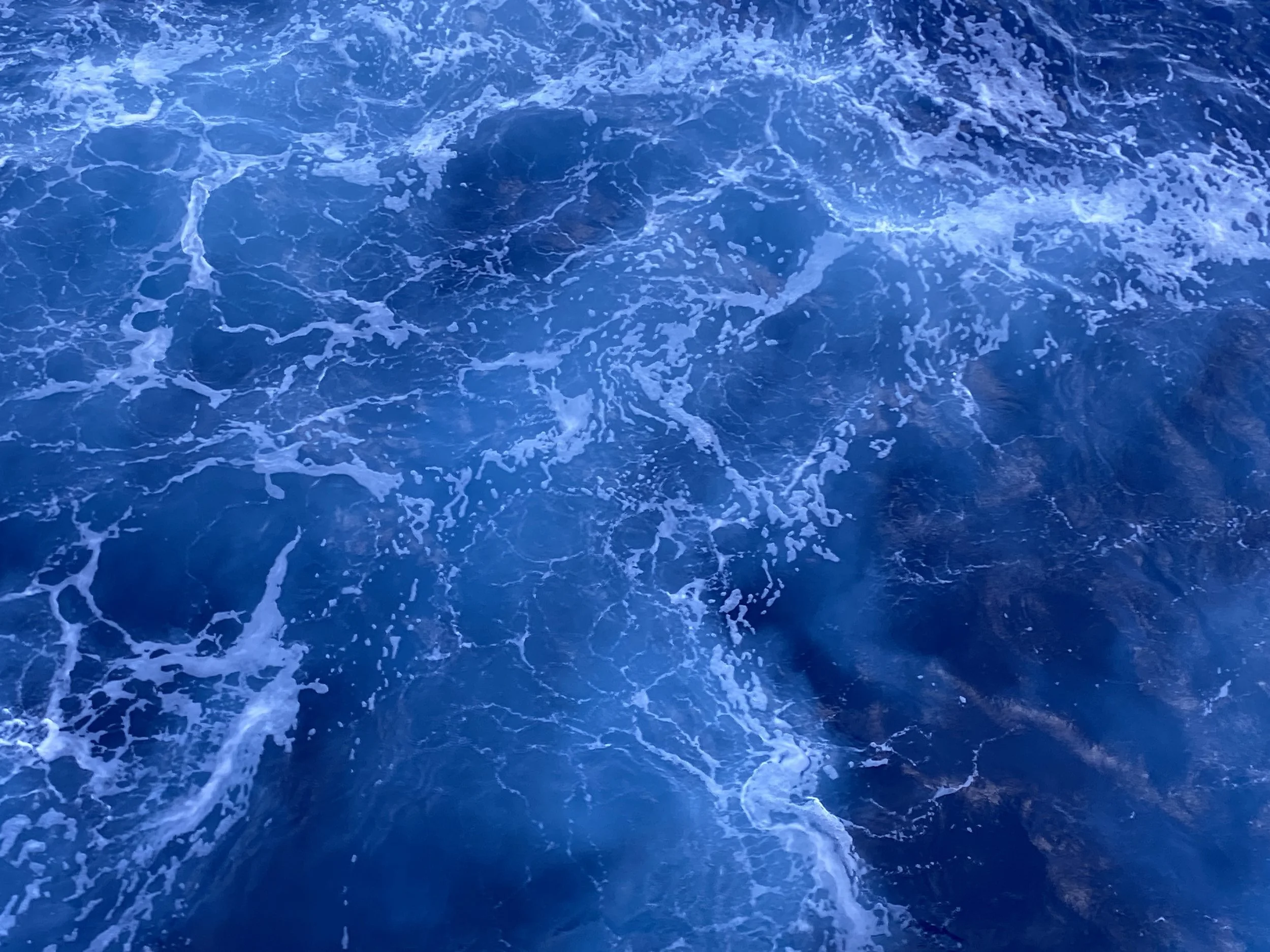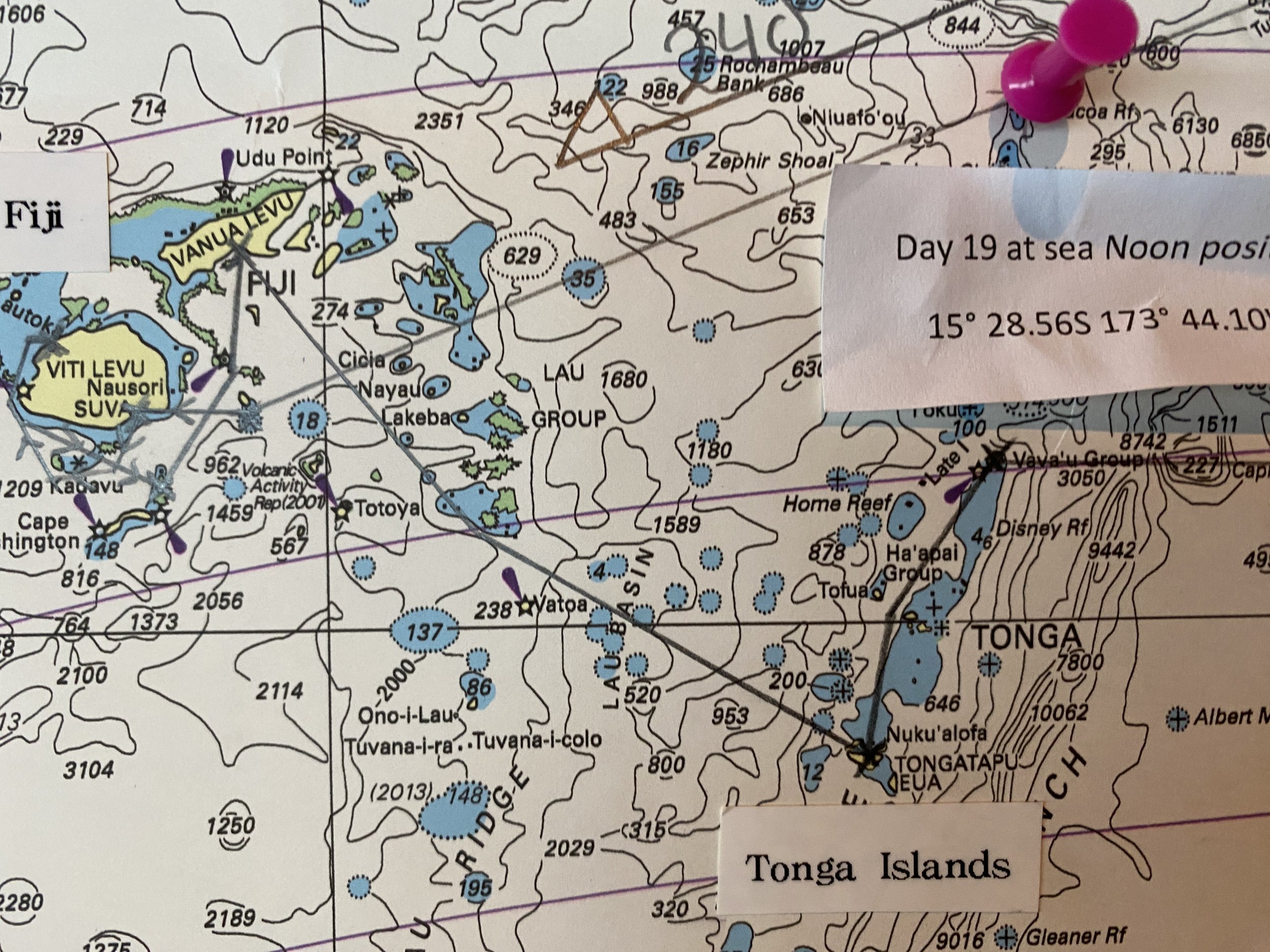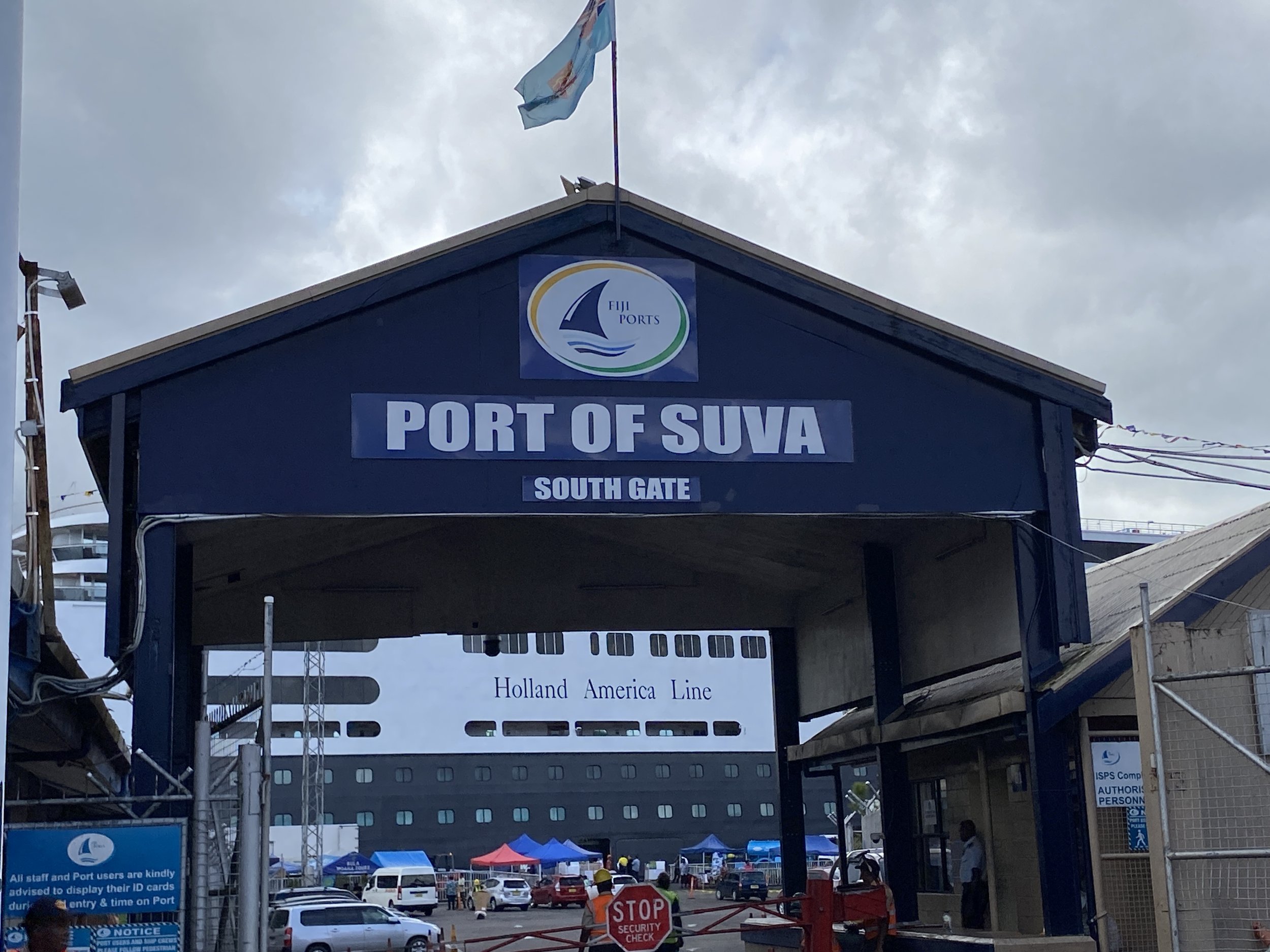I’m amazed that we see no other ships on the entire Pacific Ocean. We’ve seen one container ship on day 4 or 5 but nothing else since. No fish, no turtle, no fins…
Out of Samoa we did suddenly see a distant island that rose steeply out of the sea. The cloud around the steep top made it look like a volcano. It was the only shape other than water surface that we’ve seen for days on end. The waves do change colour with the sky - from grey to blue and back.
I’m also amazed that, in the middle of absolutely nowhere on our little isolated ship, Nico can watch his world championships Formula 1 racing! He was even able to figure out what time to watch the event that took place on one continent, was broadcast to another and somehow appeared on our screen in the middle of the ocean. And that was no easy task. We had crossed several time zones as well as the date line. The race took place in Texas but the TV station was based in Samoa, we think. After a lot of calculations, he did find the race. But it was being aired at 6:30 in the morning! We made up for having to all wake up so early by ordering room service and having breakfast in bed while he watched.
Our next stop is Fiji. So interesting to learn that the country’s name comes from a misunderstanding again. Just like Kiribati (Kiribass) was a mispronunciation of Gilberts. When Captain Cook arrived on these shores, he heard that it was called ‘Viti’. He pronounced that as ‘Fisi’. It was translated as Vita in Tongan and became known as ‘Fiji’ in English. Today the Fijian islands are referred to locally as Viti.
Fiji lies in the heart of the Pacific Ocean. The country is made up of approximately 330 islands, of which about one third are inhabited. Its borders cover about 1.3 million square kilometres of the South Pacific Ocean. The two major islands are Viti Levu and Vanua Levu. We visited the capital city of Suva on Viti Levu.
Fiji was unknown to Europeans until just a few hundred years ago. Now it tops everyone’s bucket list as a tourist destination. Interestingly, it was water that Fiji ‘put on the map’.
Only 3% of water on earth is not salt but fresh water. Of this, only .4% is drinkable. A Canadian bought land on Fiji and started marketing the pristine water that collected in a volcanic cave in the mountains. The rain water was filtered by leafs and volcanic rock into a huge aquifer, so sheltered that it was protected from insects and bugs.
He marketed the water, sold it in square plastic bottles that have blue skies and a pink hibiscus flower on it. Now, 5550 miles away from the USA, Fiji produces more than 30% of all bottled water bought by Americans. The company has since sold to an American couple.
But, ironically, 53% of people in Fiji had no access to clean drinking water. The Fijian government demanded taxes, which the water company had evaded. When the government threatened to take back the water rights, the company changed its policies. It now pays taxes to Fiji on its +43 million dollars per year sales. Water is now the country’s largest #1 export product. The government did protect land rights and only Fijians can now own land here.
Interestingly, an Italian research company recently discovered that sea grass is capable of cleaning the ocean water after it has been polluted. Sea grass also protects wildlife in the ocean and is home to the largest number of fishes and sea turtles. Sea grass drastically reduces the amount of CO2 in the ocean. It is helping to keep Fiji’s water so pristine.
Unlike many other islands and countries in the world, it was not colonizers that settled on these islands among their aboriginal inhabitants. In 1643 the Dutch explorer Abel Tasman (after whom Tasmania was named) spotted the island. In 1789 British captain William Bligh sailed through the Fijian islands after the mutiny of his ship the Bounty. But it was shipwreckers from Europe that eventually settled here.
Traditional cannibal fork sold to tourists…
Fiji had a strong culture and a reputation for fierce warriors. They were respected across Polynesia. The Fiji King asked Britain to annex Fiji as colony after which land sales were prohibited to protect land for the locals. Health care improved but culture and traditions changed as missionaries moved in in huge numbers, converting the population and - most noticeably - changing the country from cannibalism.
Today, Fiji is an independent constitutional democracy and a major sugar industry and a billion dollar tourist industry. Suva is its capital city.
We spent two days in Suva and strolled the large market square with great fruits, vegetables and flowers for sale. It’s Kees’ birthday so this is a great place to buy him a big, tropical arrangement and have it cheers up our room!
Happy birthday flowers for Kees.
We also bought… Fiji water in Fiji! And fresh coconuts. We even bought the standard tourist item: pointed wooden ‘cannibal forks’! I was delighted to discover the Suva Carnegie Library. We also visited the museum, gardens and parks.
From Suva, we made a day trip to a beautiful natural area with hiking trails and a waterfall. We just negotiated with a local taxi driver who took us, stopped at a store so we could buy drinks and snacks, and then waited for us while we hiked and swam. We walked the trails in this dense tropical forest among flowers and ferns. THE Colo-i-Suva Forest Park is not far from the city and a great destination for a day trip. Once we worked up a sweat hiking, it was great to plunge into the cold pool underneath the waterfall. It’s reminiscent of a Mexican cenote but sheltered by tropical forest rather than caves.
Suva is a big, industrial city - interesting to see but also good to leave to find some nice beaches on Fiji’s other islands…
RESOURCES:
• Suva: https://www.fiji.travel/places-to-go/suva-and-surrounds
• Waterfall: http://www.experiencesuva.com/dir/colo-i-suva-forest-park/
• Carnegie Library: https://suvacity.org/suva-city-carnegie-library/
BOOKS - scroll down to South Pacific.












